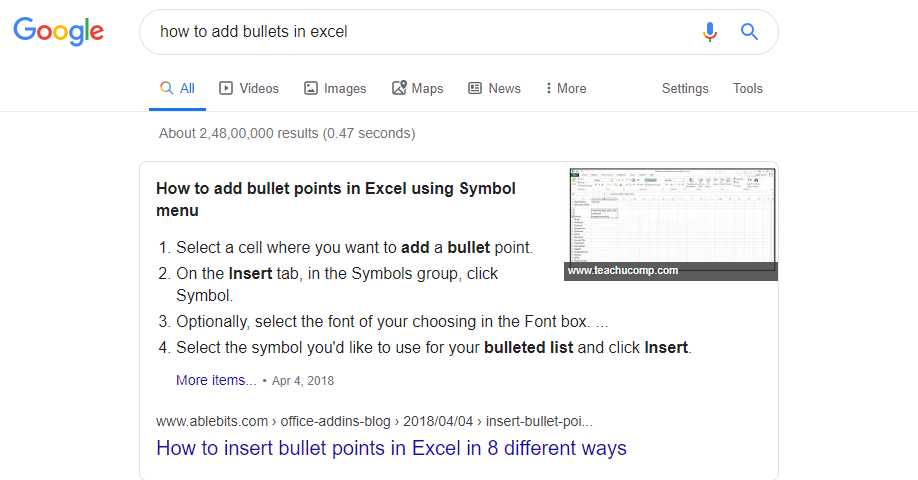10 Quick SEO Lessons For Those Taking Their Business Online
The world is currently in a state of panic, bewilderment, and uncertainty. Be it marketers or business owners, everyone is feeling the pain of the prevailing crisis.

In times such as these, it’s important to go back and strengthen the basics to ensure that your business keeps running at a normal pace. SEO happens to be at the foundation of online business basics.
Search Engine Optimisation (SEO) is an ever-evolving component of the internet. While it may seem complex to business owners who are taking their business online, it doesn’t have to be confusing.
Through the course of this article, we’ll take you through 10 SEO basics which will not only simplify this concept for you but also give you ways to improve your existing SEO practices.
What is SEO?
SEO is the process of increasing traffic to a website by improving its visibility on search engines such as Google, Yahoo, Bing and more.
An important distinction to note is that the purpose of SEO is to improve your ranking on search engine result pages (SERPs) in an organic or unpaid way, thus making it different from paid search or PPC ads.
Get Started With the 10 SEO basics
With these SEO basics, you will learn what areas to focus on and what you can do to create an SEO strategy that naturally brings your website or a given web page higher up in the search rankings.
1. Know Your Keywords
Any website needs to know the specific keywords it wants to rank for.
Therefore, conducting keyword research and identifying top-ranking and most relevant keywords is one of the most important SEO basics.
For instance, if you are an online travel company, you may want to rank for search queries such as “online travel planner”, “best places to visit in 2020”, “things to do in Berlin”, or “best hotels in Prague”.
Create value-driven content with your focus keywords in it. However, be wary of indulging in ‘keyword stuffing’, as you want your users to actually derive value from the content.
Keyword Stuffing may also get you marked as spam and blacklisted by Google. The key to getting a good ranking is to please your users.
Pro tip: Use relevant keywords in the URL of every webpage, and across headings and subheadings in your website content.
2. Don’t Ignore Meta Tags
Another crucial component of SEO basics is the meta tags, which come under HTML tags.
They essentially describe your page’s content to the search engine.
The content for these tags appears only in the webpage’s code and not on the actual web page visible to users.
To better optimize your content, it helps to get your meta tags right by taking care of the following:
- Title Tag – It specifies your page for search engines and visitors
- Meta Description: It summarises the webpage. Add your main keywords in this section.
- Robots Meta Tag: It instructs web crawlers whether a given page should be indexed or not. If you want a page to appear in search results, ensure its Robots Meta tag doesn’t include a “no follow” and “no index” command.
3. Focus on Building Backlinks
Link building is a great tactic to organically drive traffic to your website.
Here’s where your content marketing comes into play, where you create content that is educational and engaging enough for other websites to share and link you back to it.
A good way to go about this is by fostering partnerships with third-party websites.
For example, if you are a makeup brand, you could target makeup reviewers, lifestyle bloggers, and influencers to try your product, write about it and backlink to your website.
This exercise strengthens your backlinks and can go a long way in establishing your domain authority.
Pro tip: Focus on internal link building to make your users navigate from one page to another on your website. You can add links to different webpages or blog posts.
Building an online business? Build it on .online!
4. Pay Attention To Mobile
Brands often tend to neglect the mobile experience of their website, despite knowing that a majority of Google searches occur through mobile phones.
Back in 2016, Google announced that “mobile-first indexing” and on July 1, 2019, mobile-first indexing was enabled by default for all new websites.
To avoid being left out of the race, work towards making your website more mobile-responsive.
Ensure proper placement of elements such as text, images, buttons, and links, along with their look and feel on different devices and screen sizes.
5. Optimize Your Images
The amount of time your page takes to load has a direct impact on its search ranking.
Because if the user chooses to leave before your page loads, it’ll tell the search engine that the information on your website isn’t relevant.
While images add a visual relief amid the text, they can also be too heavy to load.
Hence, it is essential to optimize all your images, which takes into account the resolution, size, format, and dimension of the image. The goal is to make sure that high-quality images don’t hamper the load time of your website.
Therefore, all your visual elements must be compressed to the least possible size without affecting their resolution.
Also, add Alt-Text to all your image files to tell the search engine what the image is about.
6. Prioritize Accessibility
A rather ignored, but a key aspect of SEO basics is web accessibility. Ideally, the web should open up more possibilities for individuals with disabilities.
Websites with higher accessibility features tend to achieve better Google rankings.
Google may also downgrade rankings if it considers a website’s meta-signals to lack accessibility, thus resulting in a loss of prospective customers.
For example, you can use the alt text and caption fields for users who have a hard time seeing images on your website.
This way, they don’t necessarily have to see an image in order to understand what sort of visual context you’ve paired up with your content.
They could also include options for resizing text, transcripts for videos and podcasts, text-to-speech feature and directional cues to better assist users with accessibility needs.
Starting an online business? Build it on .online!
7. Optimize For Voice Search
The voice search technology has become more versatile and accurate with users increasingly turning to voice assistants such as Siri, Alexa, and Google Assistant to carry out their basic search.
Voice search is deemed to account for 50% of all searches in 2020. This makes it a part of your SEO basics kits.
Voice technology follows everyday language. Users conduct their searches in a more natural, conversational way.
Since queries tend to be slightly different in spoken language, it is important that you take those keywords and phrases into consideration when optimizing your website.
8. List Your Business On Google My Business
Your SEO strategy must include a verified Google My Business (GMB) listing to improve your visibility for a local search query.
For instance, if a prospect searches for “salons near me”, Google will fetch the user’s location and recommend a list of salons in that area.
By optimizing your GMB listing, you increase the likelihood of your business appearing in such search results.
Ensure your Google My Business profile has all the correct information, specifically the right address and phone number.
Ask your existing clients to give you star ratings and write reviews to build credibility. Regularly answer any questions a user may ask to establish trust.
9. Focus on Google’s Featured Snippets
Featured snippets are the block of search results that appear on top of Google’s Search Page. These are organic search results that contain the exact answer to a searcher’s query.
Also referred to as ‘position zero’, these snippets are designed to be more informative than standard organic search results.
Google simply picks the best answer from a website and features it in a snippet for the user to read at a glance. For example, when one searches for ‘how to add bullets in Excel’, this result is featured:

To get featured here, you must think from the user’s perspective. Featured snippets mostly answer to query-based searches – how, when, what, where, etc.
So, look for questions that the user might have. An easy way is to Google the topic and look for the ‘People also ask’ section.
Google specifies what people are interested in when they search for the topic.
10. Use Google Analytics For Tracking
All your SEO efforts may turn futile if they don’t generate results.
This makes it imperative to use Google Analytics to monitor your organic and paid website traffic, bounce rates, page loading speed, and much more.
By doing this, you will get insights into areas that aren’t generating desired results to make further improvements.
Additionally, you can identify top-performing content and further amplify it.
Conclusion
SEO can feel quite daunting, especially because the results are never instant. However, now is the perfect time to invest your energy and resources in optimizing your business website.
We recommend you take a step-by-step approach and work on areas that need immediate attention.
SEO is an on-going process, so you will have to keep updating your keywords and strategies to stay ahead of the curve.